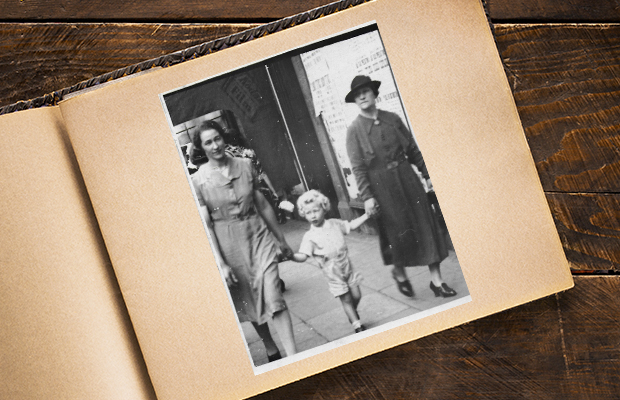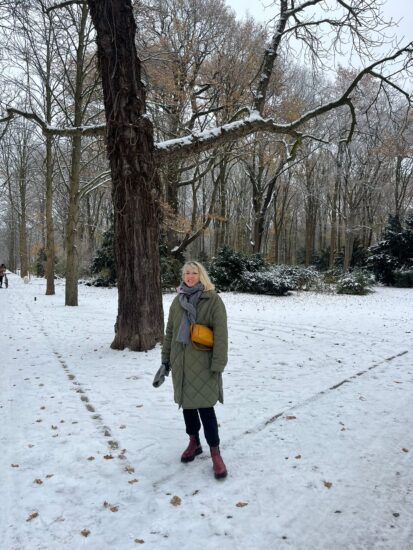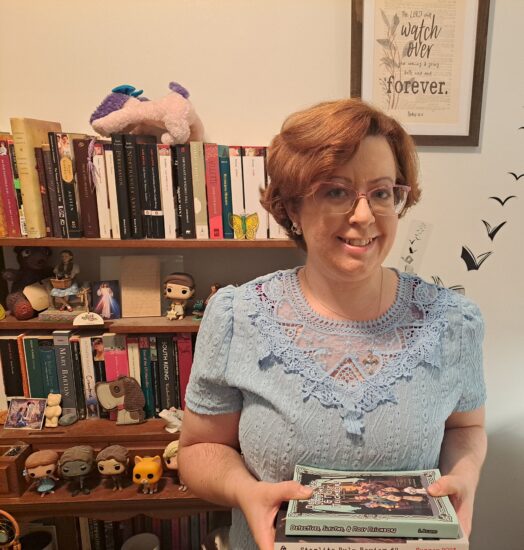
Alan chats to writer Mark Neilson, whose serial, “Designs For Life”, begins in this week’s issue.
Your serial, “Designs For Life”, is the sequel to the well-received “The Wooden Heart”. Was there any pressure involved with writing the follow-up serial?
At first, I wasn’t too keen in doing a sequel. Then my story characters started nagging away at me. The talented young Asha trying to set up her own design business from scratch – is she likely to find it easy, or is it more likely that she will have her resolve tried and tested by reality? Likewise, if the ex-professional violinist, Gabrielle, had unearthed a highly talented young performer from the most unlikely background, would their story finish there, or go forward and tax them both to their limits?
So the simple answer is that, once I sat down to write the sequel, the characters took their stories from out of my hands.
You once said to me you prefer writing serials compared to short stories. What is it about serial writing that you like so much?
As a reader, I have always hated paper-thin, two dimensional characters. In a short story there is so much to compress within 2000 to 3000 words that the story and its characters tends to be dealt with in a rush. In a serial, you have the space to explore and develop your characters, make them as real as possible, with flaws rather than perfection, doubts instead of flawless judgement and behaviour. It’s much more fun to write a serial or novel, because the characters become new friends that you look forward to meeting with and sharing their lives every day.
You do a good job of balancing fact and fiction in your serials, when you bring the past to life through your characters’ observations. Is history a subject which has always interested you?
I was taught history appallingly badly at school – all dates and treaties. It never struck me that the stories I loved, told by my grandparents, amounted to “real” history. It was only when I was researching material in dusty archives for various magazines that I realised many of these old tales were true, and that history was about interesting characters and fascinating places, without a trace of dates or treaties.
You are also a gifted non-fiction writer. If you could choose someone famous, past or present, to write a book about, who would it be and why?
It would have to be a person whose integrity and achievements I respected. Like Kenyon Wright, who chaired the Scottish Constitutional Convention, which designed our Scottish Parliament and its procedures.
The person I did interview and write a book about, “Giving Voice To Traditional Songs”, was the iconic folk singer Jean Redpath. The story she told me knocked me over . . . How she walked out of a Finals exam in Edinburgh, not because she couldn’t do the paper, but because she had finally decided that this – and her family’s expectations – was not the life for her. So she set off to sing at a friend’s wedding in California, with only £5 in her pocket – slipped into her hand by her mother – as she left. She built her reputation with nothing but a glorious voice, an irrepressible sense of self-deprecating humour, and a broad Fife accent.
When Jean died from cancer ten days after struggling (at her own insistence) through the final interview for the last chapter of her story, I suffered so badly from the loss of a close friend that I have never been tempted to do another biography. It was an honour and joy to work with someone who had never changed from the same unspoiled lassie from Fife, who went out to try her hand at being a singer. As Jean said, “Ach, we dinnae do divas in Fife.”
Notebook and pencil or laptop? Kitchen table or study? Blank wall or inspiring view?
I write mainly directly on to my computer, but the house is littered with scraps of paper and illegible writing of better sentences, possible twists in the current story, or even replacement paragraphs for ones I don’t like. I work in my study, facing a blank wall. But knowing that if I lift my eyes a little, I can see a cheap painting my mother bought, depicting a small stone-built cottage in a tiny sheltered bay, looking out to a broad grey sea.
She thought it was a scene from the Isle of Arran, and it was the house she wanted to retire into one day. Sadly, she didn’t live that long. But she loved that painting, and it reminds me of her every day of my life.
P.S., What’s your one top tip for aspiring writers?
Today, writers are spoiled by choices of books, college and university courses, and support groups, all designed to help. However, the only way to learn to write, is to write. And keep writing, despite rejection letters. While you keep writing, make sure you learn; don’t just repeat mistakes. If you’re lucky – and I was – you will find an editor somewhere who likes enough of what you have submitted to take the time to steer and advise you. Listen hard: these guys are professionals and know exactly what their readers want to read.
Just as songs were Jean Redpath’s life, words have become mine – ever since I escaped from a misspent youth, which left me stranded as an unhappy middle-aged Professor of Economics. Now, I only wish I’d had the courage to tunnel out and escape twenty years before I did.
The accompanying photo is me aged four, between my granny and my mother, both of whom were avid “Friend” readers, and in whose cherished memory I have always enjoyed writing for the magazine.
Find more Writers of the Week.




